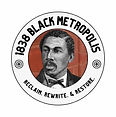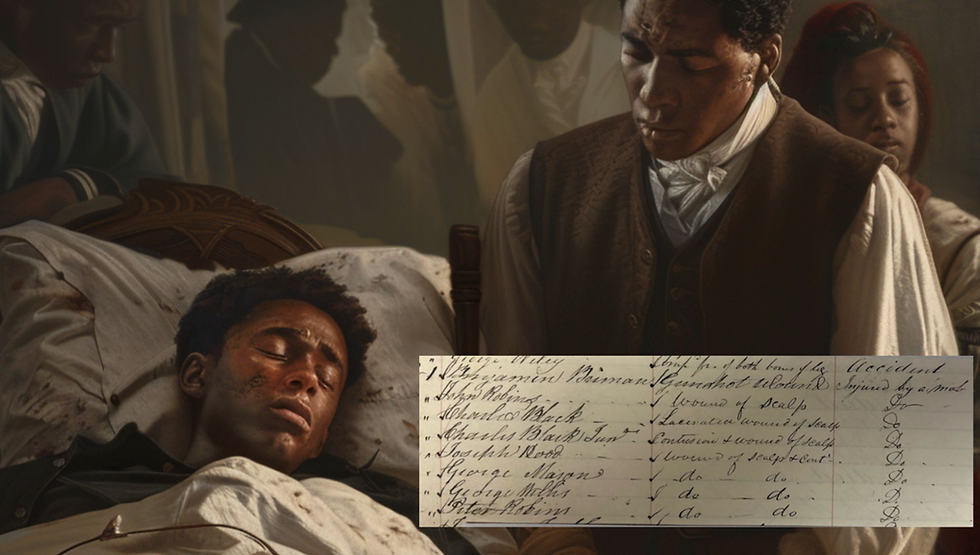Euphemia's Victory Tour: An Explosion of Joy in The Black Metropolis
- Michiko Quinones
- Jan 30, 2024
- 6 min read
Updated: Mar 22, 2024
We often come across stories that move us deeply in this research.
But this one was a surprise. I was looking for the 'Philadelphia Institute' and literally stumbled on this incredibly powerful testimony to the united collective power of The Black Metropolis.
The Fugitive Slave Act of 1850 was in Response to the Success of The Black Metropolis and the Underground Railroad
This story starts a little later in our timeline with the Fugitive Slave Act of 1850 . This act of congress was in response to large number of Freedom Seekers making it North.
Let's just stop there for a sec.
The Black Metropolis, the Underground Railroad, and white allies were so successful in helping Black folk escape enslavement, that they had a national economic impact on slave power. Economist Conor Lennon calculates the 'likelihood of escape' in their analysis of the economic reasons for, and economic impact of, the the Fugitive Slave Act.
And that likelihood is correlated with distance to Pennsylvania.

Another way to think about this is from a labor perspective. The general strike against enslavement was growing rapidly. Enslavers complained to congress that they were losing money. And this was all correlated to self-emancipation of enslaved people.
W.E.B Dubois starts Black Reconstruction in America with an economic view - that enslaved people were workers who could and did exercise their rights through strikes. In this view, revolts and self-emancipation are considered to be labor strikes. For example, in this passage, DuBois' view was that the nearly 500,000 Black people who left plantations at the start of the Civil War were exercising a general strike.

When we hear about the Fugitive Slave Act, we hear about the mass exodus of people from Philadelphia. This story is usually painted in the language of fear and oppression.
But from another perspective, this is a story of strategic success against a global financial system. Despite oppression, despite disenfranchisement, the spaces of sanctuary and stability created by efforts of Black People in Pennsylvania were highly successful.
Not only was the Fugitive Slave Act (FSA) a retaliation to the success of The Black Metropolis, it also failed multiple times in Philadelphia. Again, the historiography focuses more on living in fear of 'slave catchers', and less on the story of power and agency of Black people in Philadelphia and their white allies who actively and successfully continued to challenge the FSA, after it's enactment.
But we are here to restore those stories. Here we go.
Euphemia Williams, Mother of Six, is Arrested in Kensington
173 years ago, on Monday, February 6, 1851, Euphemia Williams, a mother of six, was abruptly yanked from her bed by three white men claiming that she was a 'fugitive slave' and had to be returned back to the enslaver.
She had been living in Philadelphia for over 20 years.
By 1:00 pm on Monday, the white Abolitionist legal network had sprung into action. J.M. McKim and Passamore Williamson orchestrated her trial into the hands of a sympathetic judge. And then legal luminary David Paul Brown took up her defense, challenging the baseless accusation that she was not legally free.
High courtroom drama ensued.
Euphemia sat in court with her youngest child in her arms, while Brown worked his magic, skillfully maneuvering the prosecution witnesses to discredit their own reliability.

We have a saying in our work that Everywhere is a Black Space and Black History is Everywhere. And for the first, time, I'm seeing Independence Hall as a site where Black people created history, not just where history happened to Black people.
This is because at this time, the courthouse was at Independence Hall.

And the whole Black Metropolis stopped what they were doing and went to Independence Hall.

Still writes that the news reported a 'multitude' of people outside the courthouse and a packed courtroom inside.

Euphemia's trial became a focal point for the community, a galvanizing collective stand.
It was like Occupy Independence Hall.
Black people Packed Independence Hall Inside and Out, for all the Fugitive Slave Act Cases
What I really love about this story is the resistance that Black people had when it came to the injustice system. We know that this resistance started 30 years earlier from this report on the 1834 mob riot.
This action of organizing the community to go to courts and be a visible and influential presence, not only for the defendant but to the legal system as well, is giving me life.
The judge ruled in Euphemia's favor.
And then....this happened.
Euphemia's Victory Tour
Someone had a carriage waiting for Euphemia and her children.
Transported in this carriage, Euphemia embarked on a victory tour through the city.
First the carriage went north to pass by the Anti-Slavery office at 5th and Arch.
But then she went to the heart of the Black Metropolis - to 7th and Lombard (to The Philadelphia Institute which is how I found this story in the first place).
Hundreds of people were there. Jubilant, Joyful. There were prayers, and speeches and huzzahs.
And then, as if to visually represent the idea that we carry each other, the horses were unhitched, ropes were tied up to the carriage, and spirited men pulled the carriage the remainder of the way through The Black Metropolis and all the way to her home, about 2 miles, to 5th and Germantown ave.. 😭😭😭😭😭😭

As the procession moved through the streets, the sheer magnitude of joy spilled over. Songs and shouts echoed, huzzas resonated, and the entire scene pulsated with an electrifying exuberance.
Here's how the newspapers described it at the time. The story was reprinted in mutliple papers. This is from a newspaper in England. So I guess this was worldwide news.

Black History at Independence Hall
Euphemia's case wasn't the only successful challenge to the FSA in Philly.
In her 2015 book Independence Hall in American Memory, Historian Charlene Mires describes how Henry Garnet went to trial but his case was thrown out for lack of documentary evidence.
Mires says he 💪🏾"bolted from Independence Hall'" (page 95). 💪🏾 This is what I'm going to envision every time I'm near Independence Hall.


Some cases were lost. The worst was when pregnant Hannah Dellum and her 9 year old were sent back to enslavement. Mires suggests that there may have been a movement to free her. Resistance was in the air.

Another case was in 1860 when Moses Horner, a member of the Banneker Institute, was arrested. The community sprang into action, meeting at Lombard Central to organize legal and jail support.

The Banneker Institute members were determined that no matter what the outcome of the case, they were going to save Moses.
Read this incredible scene outside of Independence Hall on 5th Street.

Biddle and Dubin in their book Tasting Freedom report that many Banneker Institute members were part of this rescue team. 27 year old Alfred Green was imprisoned at Eastern State Penitentiary for his efforts to rescue his Banneker brother (Biddle and Dubin, page 243).
What Euphemia's Win Meant
I think that Euphemia's win must have been an unexpected victory, an answer to prayers, a relief from the unrelenting oppression that started with the loss of the right to vote and continued into the Fugitive Slave Act of 1850. I can imagine that people were tired...worn out. And so when this happened, it must have signaled that there could still be successes within deep structural injustice.
Euphemia Williams' remarkable Tour of Joy trough the city, from the brink of captivity to the embrace of jubilation, serves as an enduring testament to the strength and unity of the Black Metropolis.
Sources:
Biddle, Daniel R. and Murray Dubin. Tasting Freedom: Octavius Catto and the Battle for Equality in Civil War America . Philadelphia: Temple University Press, 2010.
Du Bois, W. E. B., & Lewis, D. L. (1998). Black reconstruction in America. Free Press.
Lennon, C. (2016). Slave Escape, Prices, and the Fugitive Slave Act of 1850. The Journal of Law & Economics, 59(3), 669–695. (Caveat on this source: Black people are treated as economic objects in this source.)
Mires, C. (2015). Independence Hall in American Memory. University of Pennsylvania Press.
Mires, C. (1997). Memories lost and found: Independence Hall in American history and imagination. ProQuest Dissertations Publishing.
Still, W., & Finseth, I. F. (2007). The underground railroad : authentic narratives and first-hand accounts. Dover Publications.







